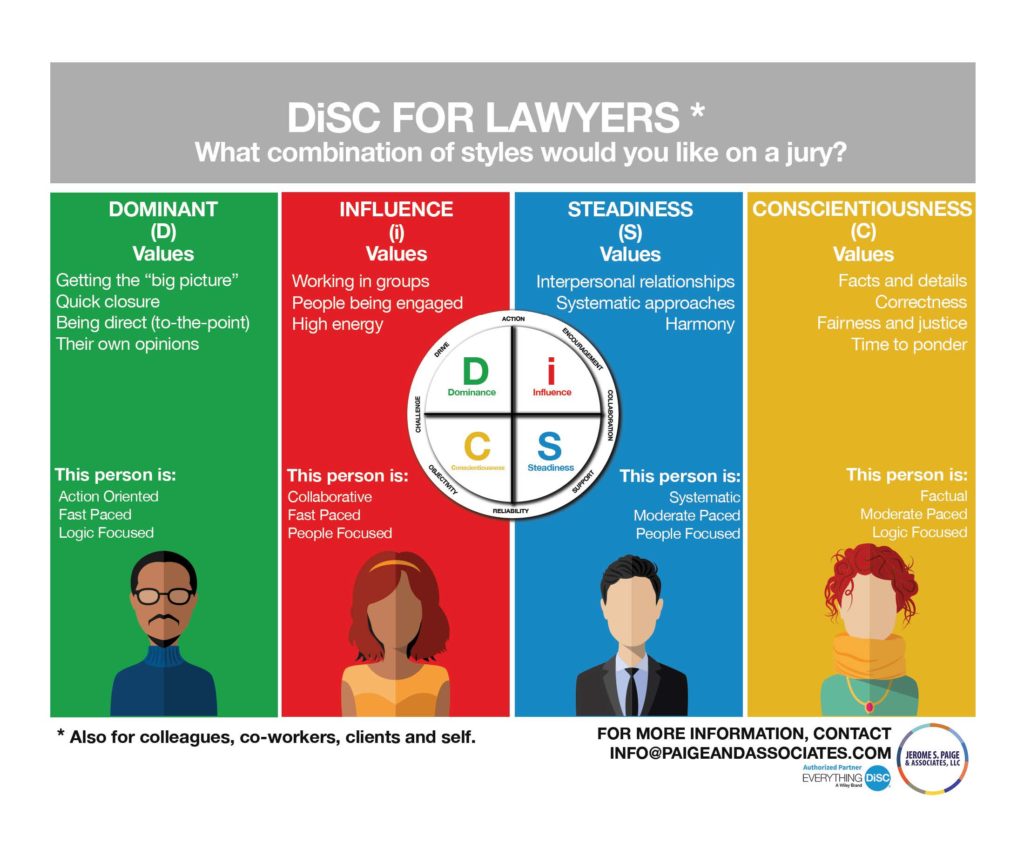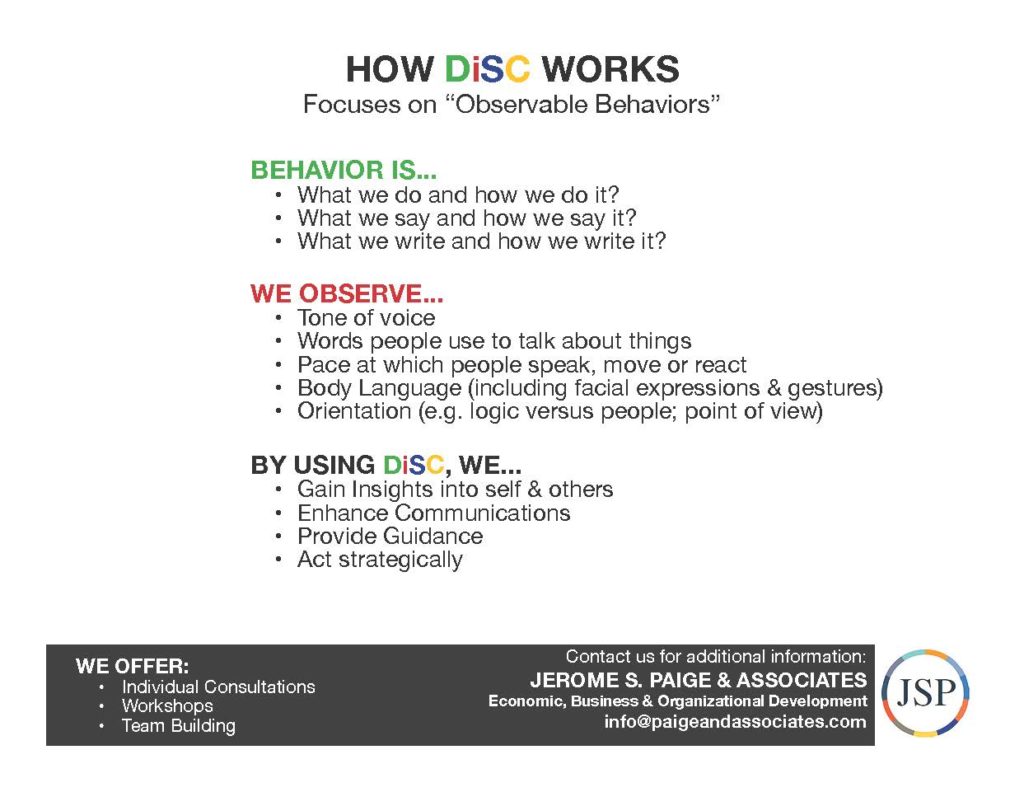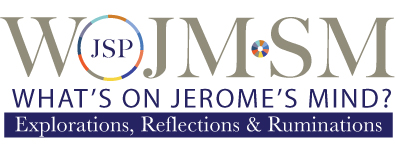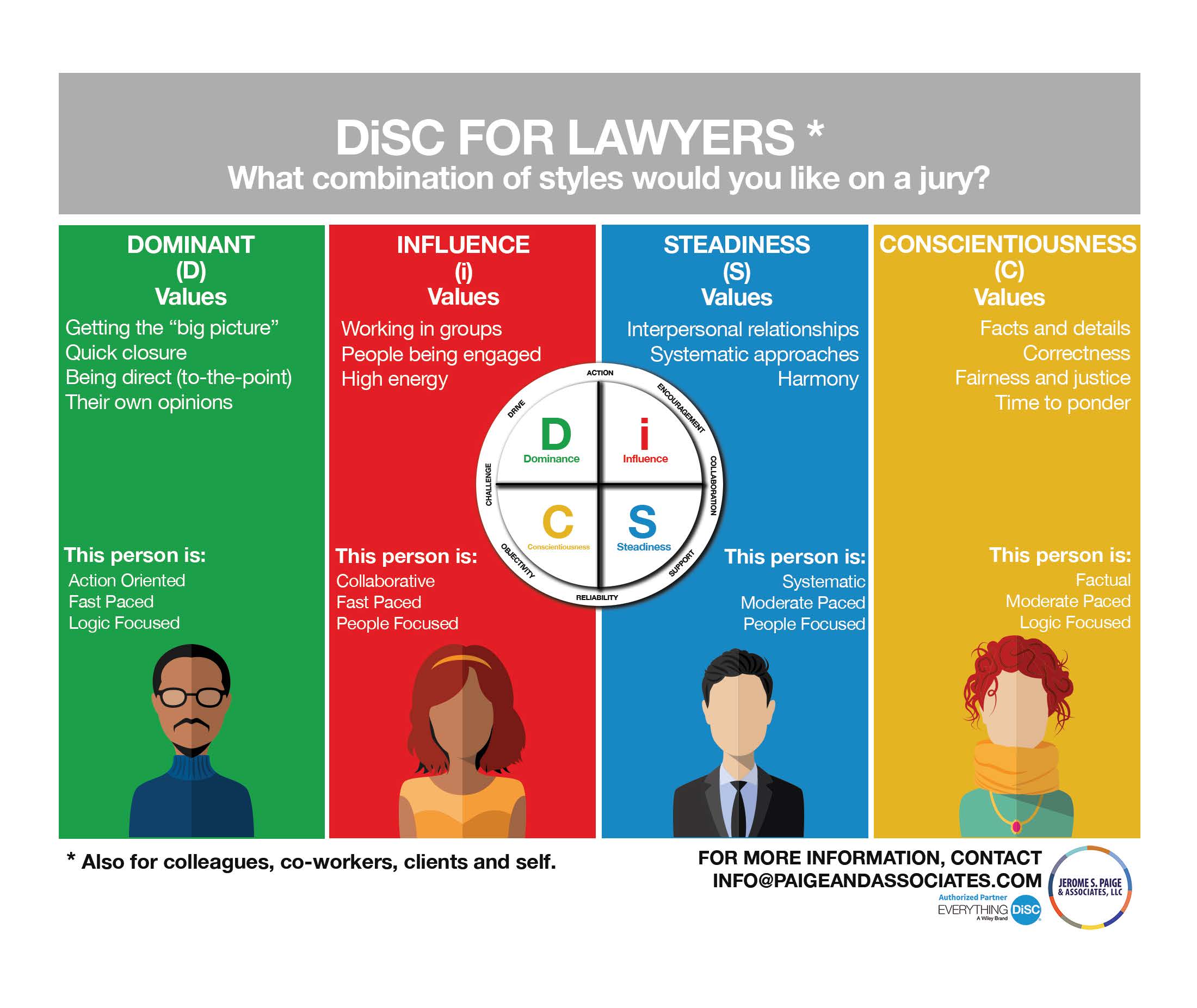

DiSC® provides lawyers quick guides to understand what drives jurors by observing their behaviors. A juror’s observable behavior is what they do and how they do it; what they say and how they say it; what they write and how they write it; and what they express and how they express it.
Lawyers can discern the tone of voice, word selection, the pace of speaking and responding to questions, facial expressions, and gestures; and orientation toward being logic- or people-focused.
DiSC classifies observable behavior into four types – Dominant (D), Influence (i), Steadiness (S), and Conscientiousness (C).
What mix of DiSC® types would you like to have on your jury? What combinations of the following types would you like deliberating your case?
- Action-oriented, fast-paced, and logic-focused
- Collaborative, fast-paced, and people-focused
- Systematic, moderate-paced, and people-focused
- Factual, moderate-paced, and logic-focus
Each juror is a combination of the four types, yet they have a proclivity toward one. No one type is better, or worse than another. Some styles value getting the big picture; some, working in groups; some, interpersonal relationships; and some, facts and details. Some are reticent, while others are engaging.
These values and behaviors reflect how jurors process information during a trial and how they deliberate in the jury room. Jurors’ styles ultimately shape how lawyers present their cases.
Contact me for information about “DiSC for Lawyers” or for anyone elese.

